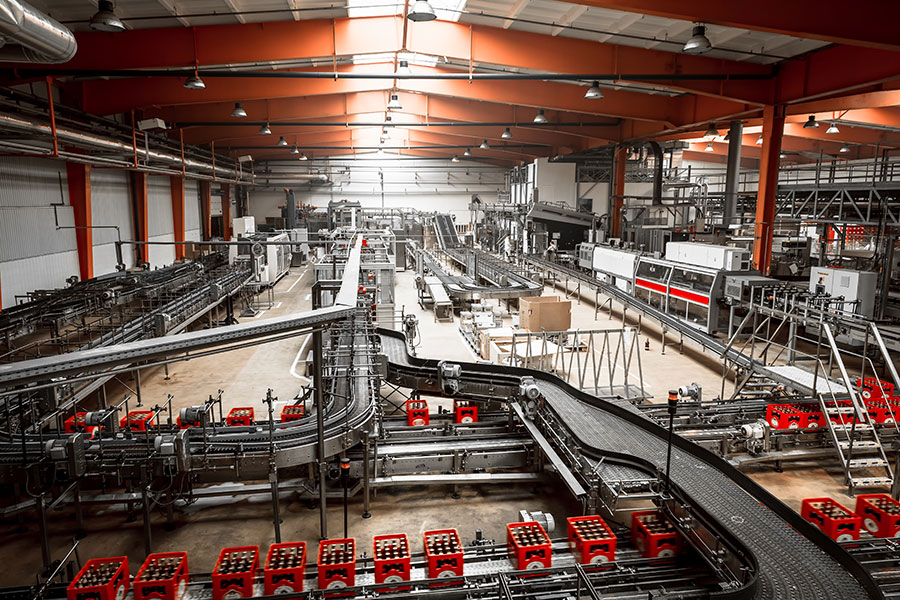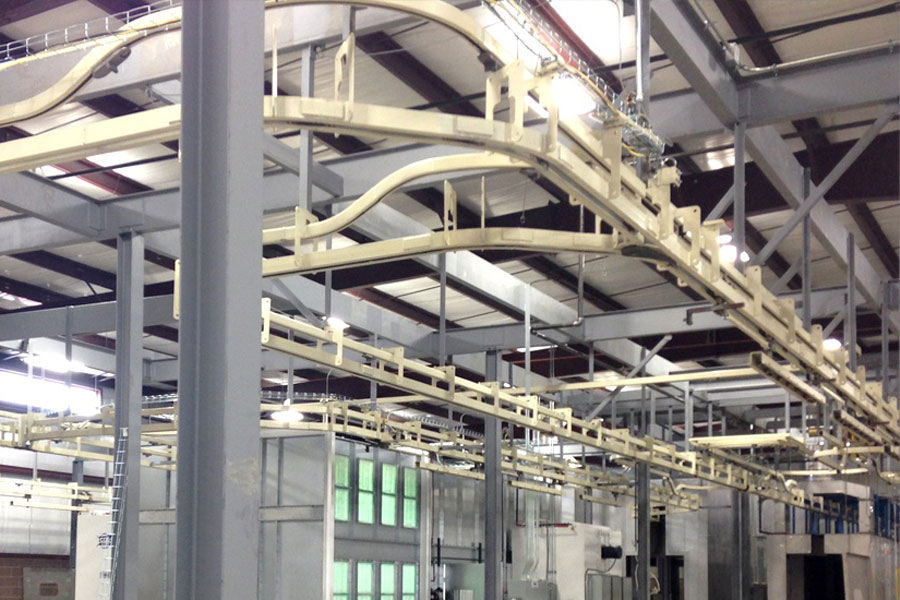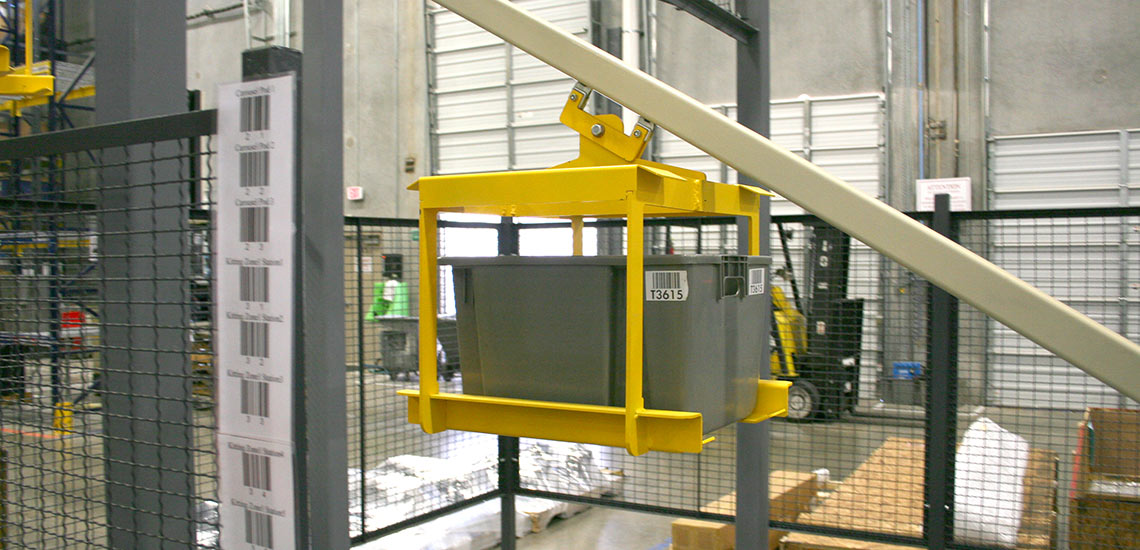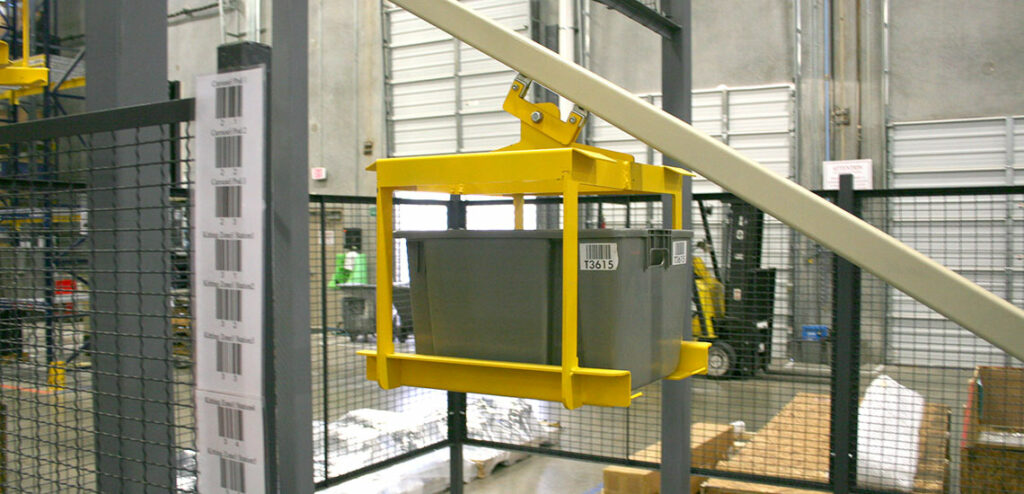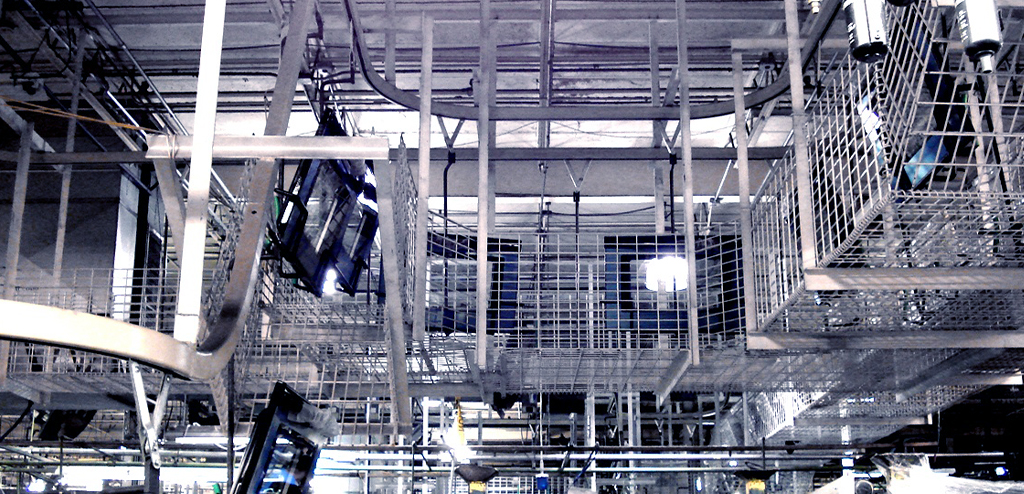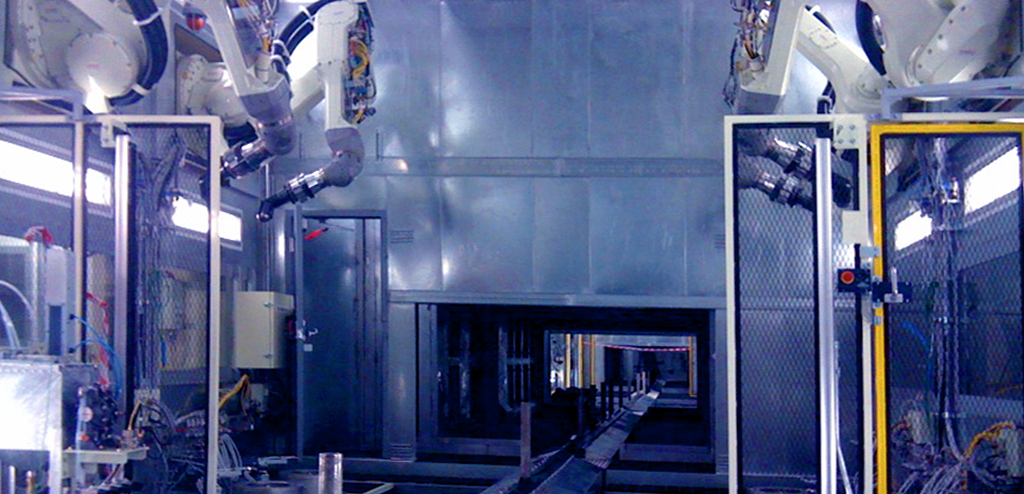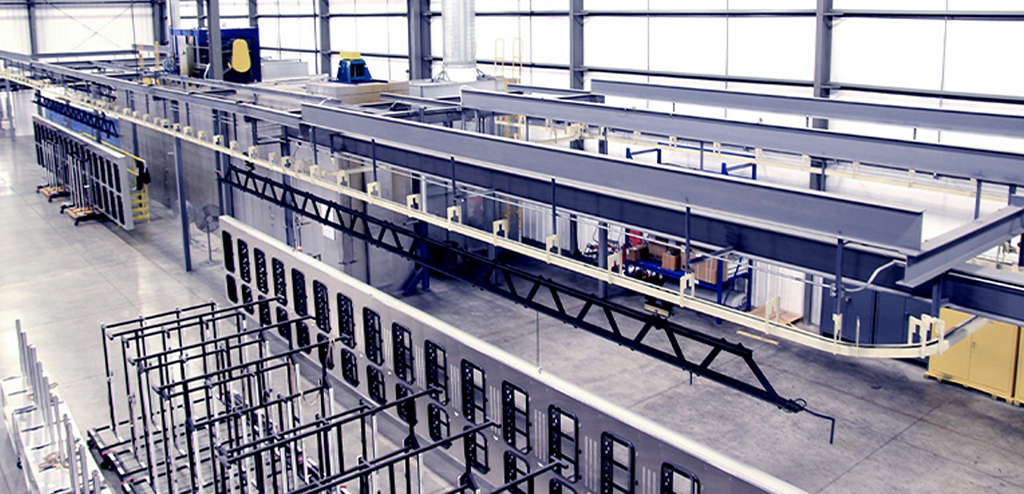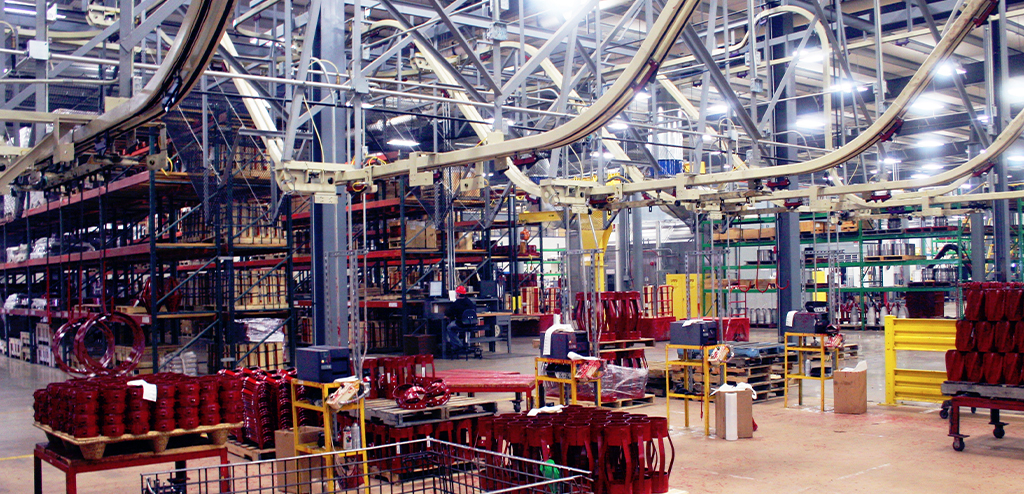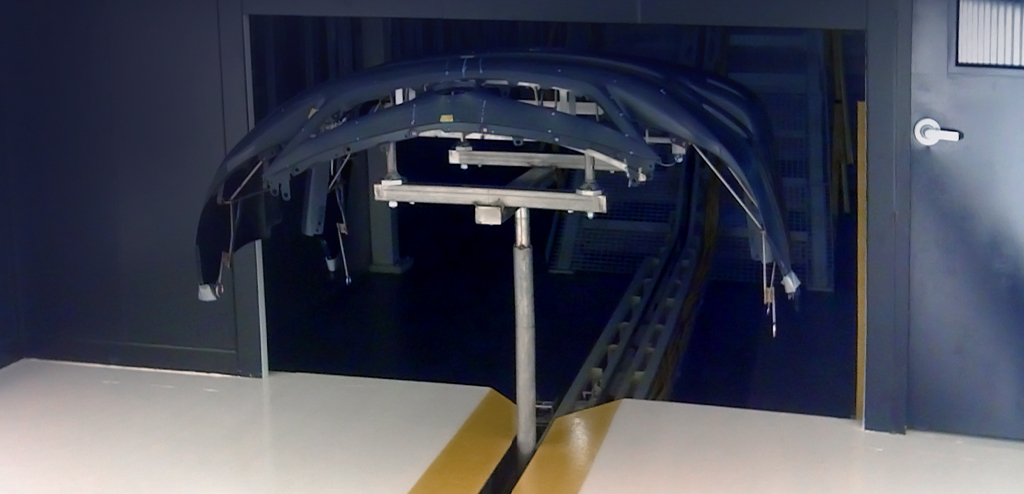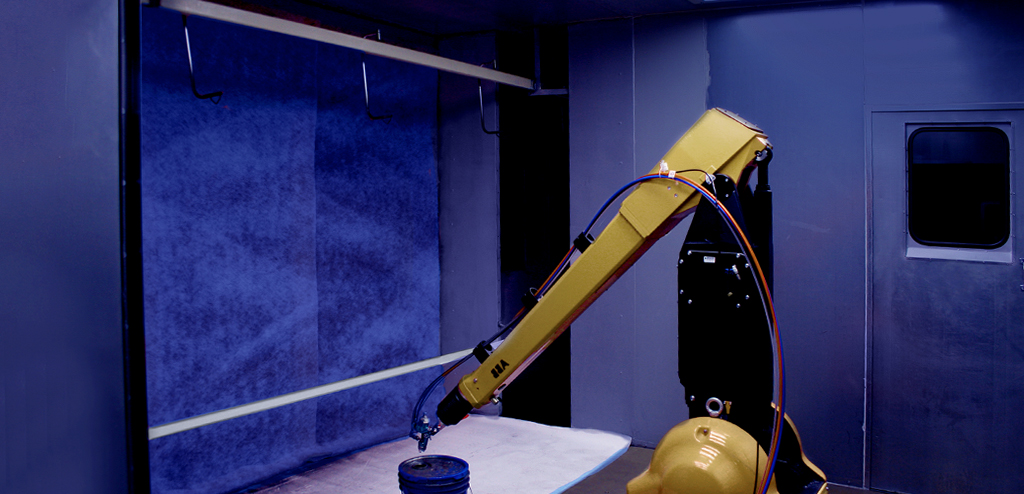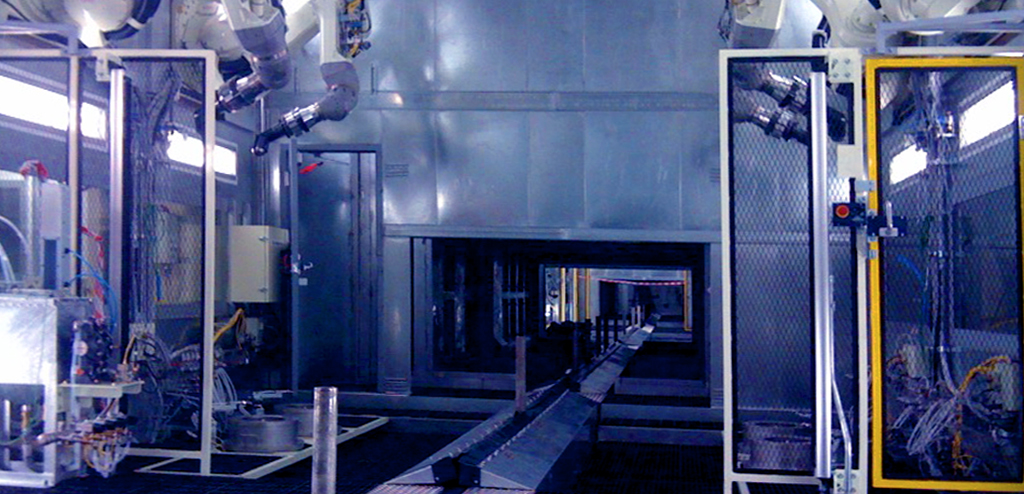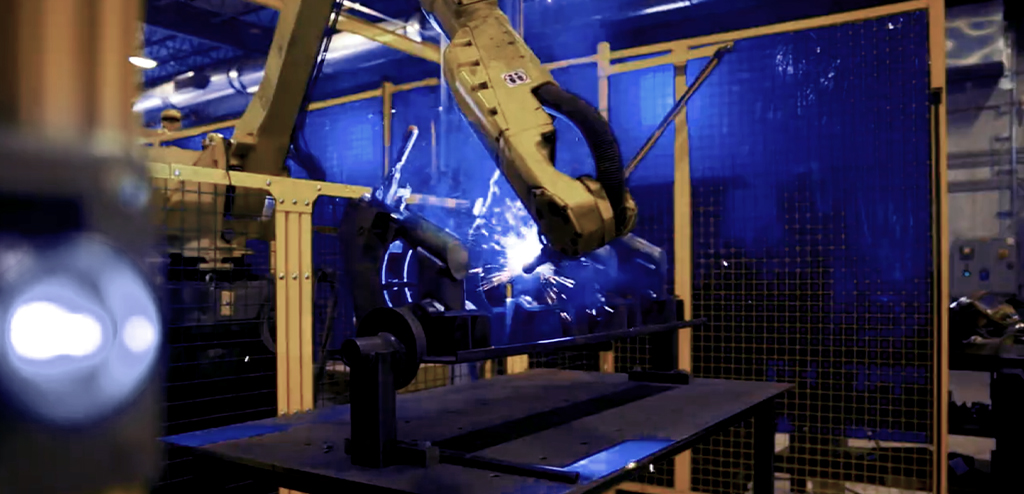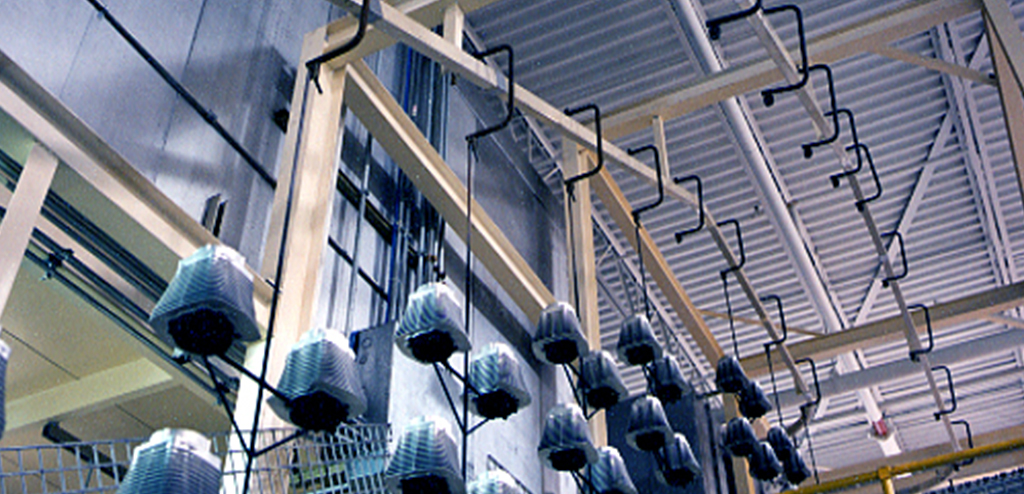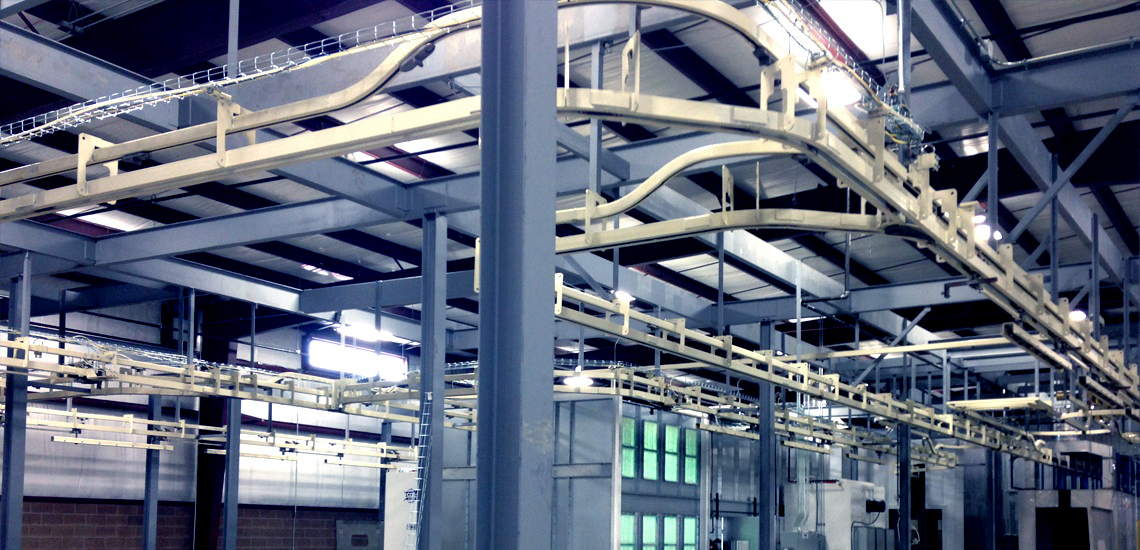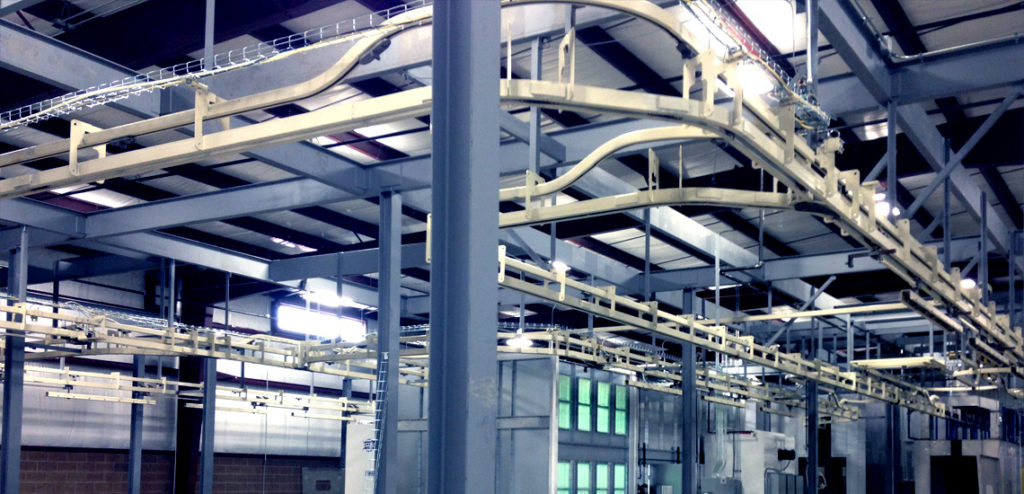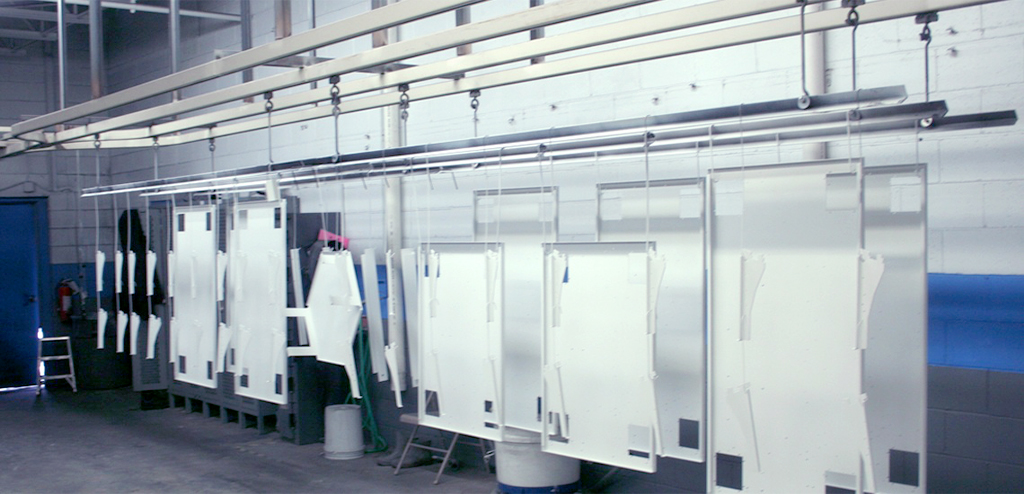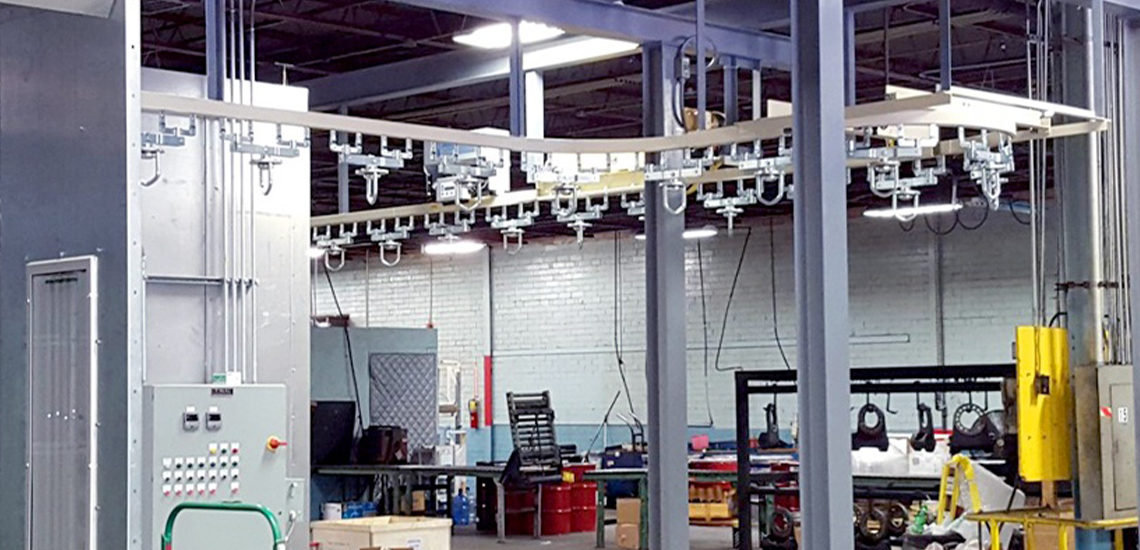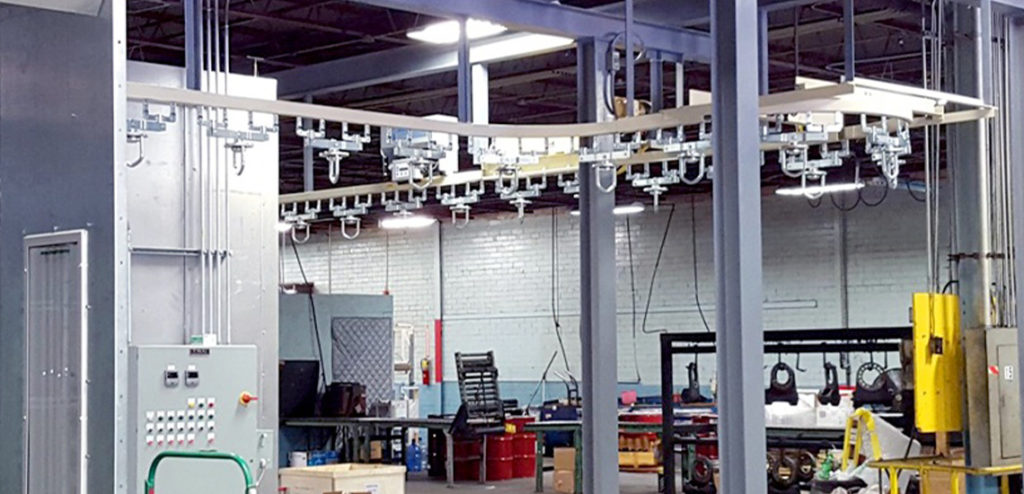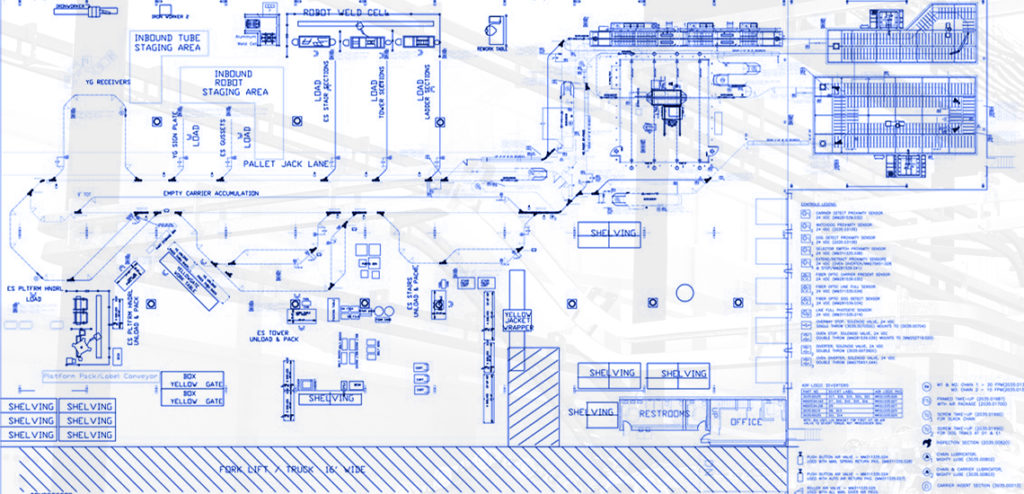We know how daunting it can be when beginning the process of creating a conveyor system in a warehouse. Deciding what conveyor system to pick, deciding on a conveyor design and conveyor controls, we would like to help break it down for you. In short, we:
- – Align conveyor function and purpose to optimize productivity
- – Obtain plant layout to determine where the conveyor is to be installed and create a path that connects it with load-unload areas and process equipment for smooth operation
- – Identify size and weight of product to be transported and consider any process equipment the product passes through to design a carrier that allows easy loading and unloading
- – Identify electrical characteristics, carrier spacing and track elevations to enable easy and safe interaction between worker and carrier
- – Calculate chain pull to maintain the normal operating speed of a conveyor under a rated capacity load
6 Considerations when Picking the Right Conveyor System
The first step of any conveyor design process is choosing a conveyor systems design. We already have a full article on the top 6 considerations for the right conveyor system to ensure you make the best decision for your warehouse, but here’s the quick version.
In order to pick from our designed conveyor systems, it is advisable to do a few things. Reflecting on conveyor history is first. Past conveyor experiences, successes and problems should be noted.
Next is specifying the conveyor operation. This is done by:
- – Defining how many materials need moving and the window of time in which it must be completed.
- – Knowing the demand at each drop point. In some cases, there may be multiple discharge points.
- – Determining which conditions initiate or stop a refill. In multiple discharges, develop a suitable sequence of operations to establish refill priority so the process does not delay or halt.
- – Deciding if cross-contamination could be an issue. This is especially imperative when considering a single conveyor for multiple materials.
A conveyor also depends on the materials used. You can categorize materials by these methods:
- – An esoteric or trade name (example- SnoMelt)
- – A generic name (example- salt)
- – A chemical formula defined by its primary ingredients (example- sodium chloride, NaCl)
The form or state in which the material should be handled in is also important, along with the flowability, composition of solids, and particle size.
The environment in which your warehouse is located is key in the decision-making process.
Finally, space constraints and budgeted conveyor costs are considerations as well.
Designing the Right System with Richards-Wilcox Conveyor
Once we’ve consulted with you, we will choose the best conveyor fit for your operations, be it inclined conveyor design or flat, and what conveyor controls you need. There are choices that best suit electronics manufacturing, and others that are a solution for factories with limited headspace.
To ensure that you can see our choice for you in motion, we also offer you conveyor simulation to observe what the specific conveyor system looks like for your factory.
Conveyor simulation is a computer-generated model that displays the ins and outs of a proposed conveyor system. This allows the user to see exactly where the various components of a system would fit into existing space. It’s important to understand that these models are far from fixed, schematic diagrams; the simulation software is designed to imitate the workflow produced by a functioning conveyor. To that end, the software shows the conveyor system in motion, allowing the user to see graphical representations of products being moved through the various workstations in real time and in three dimensions. In addition, the user can also see the conveyor from multiple angles for detailed analysis. It’s even possible to “zoom in” for a closer look.
Conveyor computer simulation may be used either to design a new system from scratch or to explore proposed modifications in an existing system.
We also offer robotic integration for your factory, because at Richards-Wilcox Conveyor, we believe in Industry 4.0 – where machines and robots work in harmony to achieve your goals. We seamlessly integrate conveyor systems with existing and engineered robotic systems, while still exceeding the quality engineers have come to expect.
Robotics integration is second nature in Industry 4.0, as more and more companies add automated solutions to their existing systems across a wide range of general industries. We are specialists in conveyor robotics integration, with quite a simple approach to a complex process: conveyor and computer work as one. Thanks to adaptive modular design, we can make any of our lines robotic.
Today, we live in the world of Industry 4.0. Manufacturing and distribution operations are getting faster, smarter, leaner, more advanced. It’s a jungle out there. To survive, you have to be efficient, effective and ready to adapt at a moment’s notice. It all starts with your conveyor. Richards-Wilcox Conveyor. Engineered for evolution. Contact us to get started.
